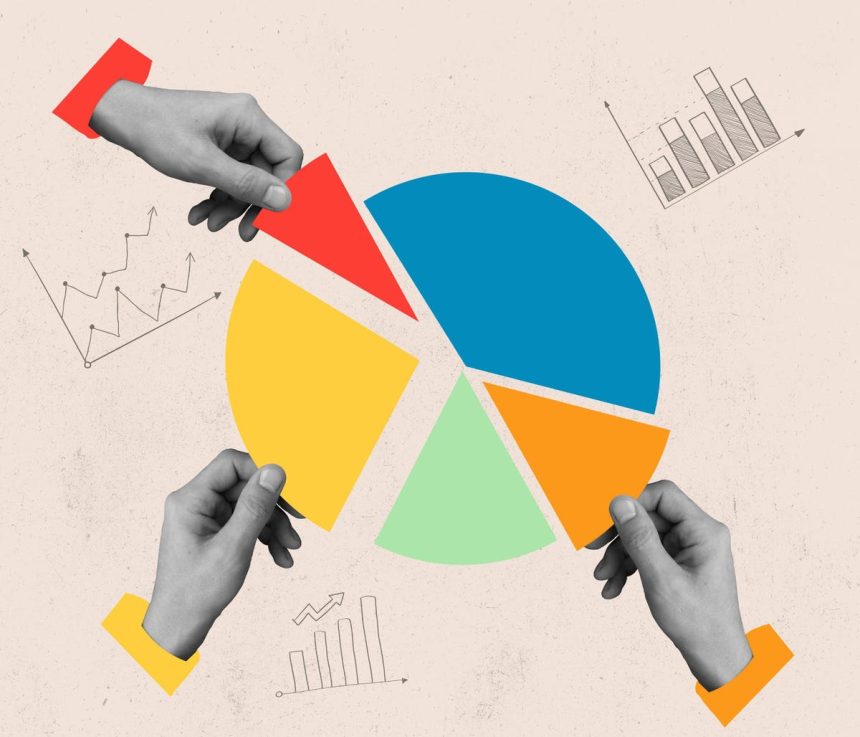The best agencies constantly evaluate campaign performance to ensure a consistently healthy return on investment. As market trends shift—and along with them, agencies’ ROI—they must strategically reallocate budget dollars toward channels and formats that provide the best results.
The members of Forbes Agency Council are no strangers to the process of budget reallocation, and many of them have already reprioritized their marketing and ad spend this year. Below, 20 members explain how their agency budgets have shifted this year, including the tactics and platforms they’re leaving behind and where they’re putting those dollars instead.
1. From Google Ads To LinkedIn Ads
We shifted the budget from Google Ads to LinkedIn Ads, which offer more precise targeting options, allowing us to filter and directly reach decision makers in specific industries. This shift enabled us to focus our resources on a platform that provides a higher likelihood of connecting with the desired B2B audience, increasing the potential for lead generation and business opportunities. – Ajay Prasad, GMR Web Team
2. From Facebook’s Paid Spend To TikTok Ads
We are doing away with Facebook’s paid spend. Meta’s support options are notoriously scarce for smaller agencies. However, they are a bit better since launching the ad support team. TikTok’s ad options, by comparison, are unsaturated and offer an excellent cost per result. – Kelly Samuel, Snack Toronto
3. From Radio Ads To Influencer Marketing And PPC Ads
Our agency is shifting the budget away from radio ads due to declining impact and ROI. Instead, we’ll allocate funds to influencer marketing and PPC ads. These choices tap into engaged audiences and offer precise targeting for better campaign performance and client ROI. Yet decisions will remain adaptable based on the market dynamics. – Muhammad Eltiti, BOOST
4. From Paid Ads To Public Relations
With the cost-of-living crisis, I am finding that clients—and even my agency—gain a better ROI from PR rather than any paid advertising spend. Publicity is a great way to break through the advertising clutter. It can be free if you do it yourself, and it helps position your business as an expert in your field. – Adrian Falk, Believe Advertising & PR
Forbes Agency Council is an invitation-only community for executives in successful public relations, media strategy, creative and advertising agencies. Do I qualify?
5. From Sponsoring Industry Events To Hosting Our Own
We’re moving money away from sponsoring industry events to creating our own events. With a larger team, we have the resources to manage the administrative setup and run our own events. We’ve found the effort-to-impact ratio of our own events versus industry events is much more valuable. Yes, they are smaller and lack the reputation of big events, but ours are more focused and can also help with client retention. – Sam Hurley, NOVOS
6. From Print Advertising To Influencer Marketing
We are shifting money away from traditional print advertising this year and reallocating the budget toward influencer marketing. We’ve recognized the growing impact of influencers on our target audience and believe that partnering with them will generate more authentic and engaging content. This shift allows us to tap into a more targeted and influential platform, driving better results and ROI for our campaigns. – Jon James, Ignited Results
7. From X (Formerly Twitter) To Other Platforms
Many healthcare and pharmaceutical clients have requested that we omit X (formerly Twitter) as part of our channel strategy. It has proven to be one of the most effective channels because many thought leaders and key opinion leaders have scientific and medical discussions there, especially around medical conferences. Now, we have to wait and see where these conversations migrate to instead. Instagram Threads is one possibility. If not, it could be a huge lost opportunity to tap into this audience. – Jill Collins, Audacity Health
8. From Social Media Content To Long-Form Written Content
We’re placing a higher priority on long-form written content and a lower priority on social media content. Social media platforms of late have been tumultuous and hard to count on. We’re seeing the internet move toward an environment similar to that of the 2000s, when newsletters and blogs captured people’s attention and allowed for deep relationships between creators and readers. – Justin Belmont, Prose
9. From Thought Leadership Content To Affinity Content
We’re shifting away from thought leadership toward affinity content. Note that it’s a shift, not a complete abandonment. Content that tells our story, who we are, what we stand for, and so on, resonates a lot more than merely, “Here’s what we think about this thing.” Again, it’s not that thought leadership isn’t valuable; it’s just a shift in the mix. – Gyi Tsakalakis, AttorneySync & EPL Digital
10. From New Client Acquisition To Client Retention
We have shifted dollars away from new client acquisition channels and campaigns. Those investments have been moved into doubling down on client retention. Any new content we create is personalized and shared exclusively with our existing clients. In addition, we’ve apportioned a percentage of reallocated funds to optimize the customer service tools and processes we use to help our clients. – Vinny La Barbera, imFORZA
11. From PPC Ads To Podcasts And Influencer Marketing
We are shifting our budget from PPC ads to podcasts and influencer marketing for better positioning and measurability. This allows us to engage with niche audiences via podcasts and leverage influencer trust. Plus, it can lead to improved ROI and, hopefully, deeper connections. – Paula Celestino, SPRK Media Group Inc.
12. From PPC Via Google To The Best-Performing Channels
Our agency is moving away from PPC via Google, as the relative cost has risen while the previously achieved results have dramatically fallen. There are other platforms and mediums to reach audiences where attention is underpriced, and we’re seeing tremendous results there. Therefore, we’re diverting our budget to the best-performing channels. – James Hacking, Socially Powerful
13. From Meta To More Predictable Ad Channels
Our company is seeing brands shift budget allocations away from Meta and into more predictable ad channels that offer in-depth audience segments. Some of that budget is staying with social media platforms, while most of the budget is moving into programmatic options using first-party data. – Korena Keys, KeyMedia Solutions
14. From Programmatic Advertising To DTP Opportunities
With fewer third-party targeting options available, I predict that funds will trend away from programmatic advertising. In turn, interest will shift (and has already) toward direct-to-publisher opportunities, whether on social media and news sites or in newsletters, to reach captive audiences. The focus is on how they are consuming digital content in specific online environments. – Rachel Winer, ROKK Solutions
15. From Traditional Print Ads To Social Media And SEM
This year, our agency is shifting dollars away from traditional print advertising and reallocating the budget toward digital advertising channels, specifically focusing on social media and search engine marketing. We have observed a significant shift in consumer behavior toward online platforms, and our client’s target audiences are increasingly active on social media and search engines. – Bryanne DeGoede, BLND Public Relations
16. From Social Media Ads To Paid Listing Websites
This year, we’re reallocating our budget from social media ads to paid listing websites. We’ve seen exceptional organic performance from top listing platforms, resulting in increased lead volume and improved lead quality. By prioritizing these platforms, we aim to maximize our marketing impact and achieve better results. – Danielle West, CAYK Marketing
17. From Paid Media To Earned, Shared And Owned Channels
When it comes to driving qualified B2B leads, we’re shifting almost entirely away from paid media and focusing on earned, shared and owned media channels. A combination of thought leadership content creation (specifically long-form writing, conference speaking opportunities and podcasting) paired with coordinated, effective and omnichannel distribution strategies has proven to be most successful. – Allison Minutillo, Primacy
18. From Long-Form Video To Short-Form Video Content
As an agency, we are moving away from long-form video content and toward short-form video content, such as Instagram Reels and YouTube Shorts, which are more shareable and could assist in driving traffic to longer-form content. We are using shorter-form videos for top-of-funnel content to support other content throughout the rest of the marketing funnel. Just banking on the long-form content alone—those times may be behind us. – Bernard May, National Positions
19. From Middle-Of-Funnel To Top-Of-Funnel Approaches
For our e-commerce sellers, we’ve started pulling budget away from middle-of-funnel approaches and are focusing on more top-of-funnel approaches. During this time of year, we always try to introduce as many new people to the brand as possible. This way, when Q4 hits, we return to a middle-of-funnel approach with a much larger audience to target during the busiest time of the year. – Andrew Maffettone, BlueTuskr
20. From Paid Influencer Collaborations To P2P Opportunities
I’ve noticed most of our brands have shifted away from paid influencer collaborations and back toward press buys, such as peer-to-peer print, online and broadcast opportunities. Broadcast seems to still drive a lot of traffic. Online and print P2P opportunities are where you get those full articles that focus on you and your brand, as it’s much harder to get brand-focused editorial these days, and most are requiring affiliates. – Jessica Kopach, The JKO Agency
Read the full article here










